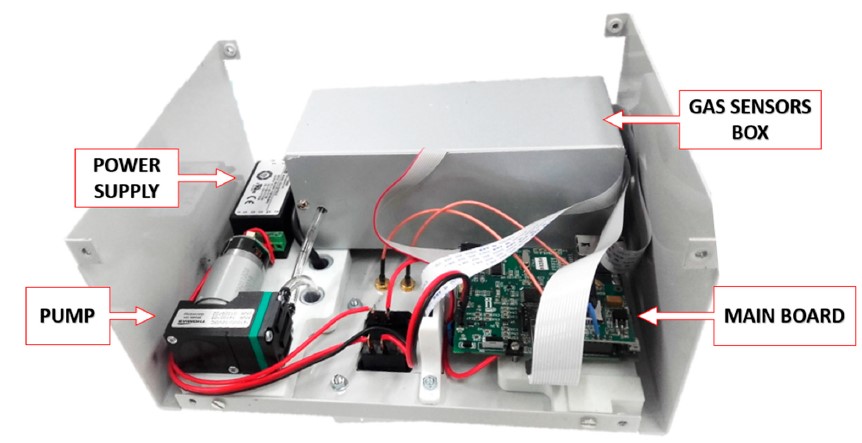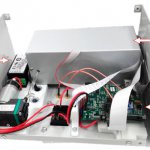
This paper presents a portable device for outdoor air quality measurement that provides concentration values for the main pollutants: NO2, NO, CO, O3, PM2.5 and PM10, and other values such as temperature, humidity, location, and date. The device is based on the use of commercial electrochemical gas and optical particle matter sensors with a careful design of the electronics for reducing the electrical noise and increasing the accuracy of the measurements. The result is a low-cost system with IoT technology that connects to the Internet through a GSM module and sends all real-time data to a cloud platform with storage and computational potential. Two identical devices were fabricated and installed on a mobile reference measurement unit and deployed in Badajoz, Spain. The results of a two-month field campaign are presented and published. Data obtained from these measurements were calibrated using linear regression and neural network techniques. Good performance has been achieved for both gaseous pollutants (with a Pearson correlation coefficient of up to 0.97) and PM sensors.


COMMENTS